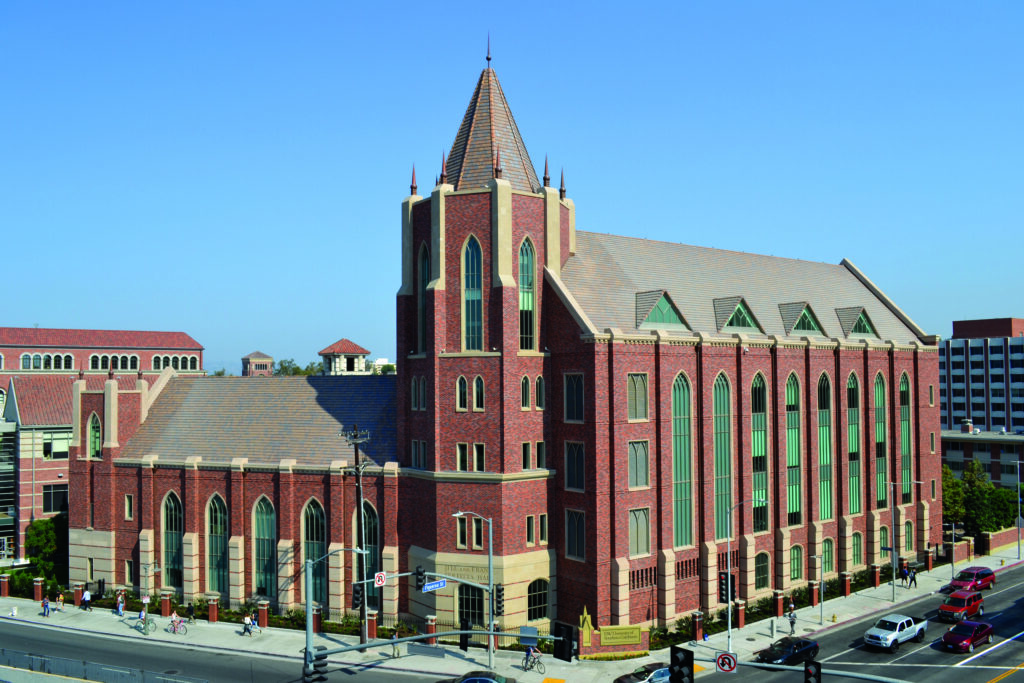
Masonry — the timeless craft of assembling individual units of bricks, stones, or concrete blocks — remains a cornerstone of California’s construction landscape. This ancient art, interweaving skill and precision, plays a pivotal role in shaping the architectural beauty and durability of commercial structures across California. From the fiery kilns transforming clay into sturdy bricks to the meticulous shaping of natural stones and the robust composition of concrete blocks, explore how these materials are not just building blocks but embodiments of sustainability, innovation, and safety in the modern construction world.
The production of man’s oldest manufactured product continues to evolve. Composed of shale and clay, brick is fired in kilns of approximately 2,000 degrees Fahrenheit, creating a chemical bond between the clay particles. Brick comes in a variety of sizes and textures. Common lengths are 8 and 12 inches with a 4-inch thickness with height varying based on the producer.

Stone masonry is constructed with stones and mortar. This method is widely applied in the creation of foundations, floors, retaining walls, and arches, as well as walls and columns. In this process, natural rocks are meticulously shaped and prepared by stonemasons. They work with either natural-cut stone — such as marble, granite, and limestone — or artificial stone, made from concrete, marble chips, or other masonry materials. Using a special hammer or a diamond-blade saw, workers cut stone into various shapes and sizes.

Concrete blocks all consist of three basic ingredients: water, cement, and aggregate (sand or rock) though sometimes, cement replacements such as fly ash are used. Concrete masonry units (CMUs) — made from cement and appropriate aggregates — are units of building blocks. CMUs are structural units used for load-bearing foundation walls, as well as basement, partition, exterior, and retaining walls.

Advancements in material technology, mix formulations, and engineering have enhanced the strength and durability of masonry construction beyond that of older structures throughout the state. The most common masonry construction methods are:
The predominant construction method for concrete masonry in which individual units are bonded using mortar. This technique allows for diverse bond or joint patterns, creating unique and visually appealing patterns in a concrete masonry wall. Notably, the bond pattern can also enhance the wall’s structural strength. The classic bond pattern in concrete masonry is the running bond, characterized by vertical head joints offset by at least one-quarter of the length of the unit, but is most commonly half the length of the unit.

Apart from the running bond, another widely favored bond pattern is the stack bond. In stack bond masonry, head joints are typically aligned vertically. More specifically, it’s defined as a pattern where the head joints in successive layers are offset horizontally by less than a quarter of the unit’s length.

As an alternative to mortared construction, there’s the dry-stacked (or surface-bonded) approach. This method involves placing masonry units without mortar, followed by coating both sides of the wall with a surface bonding material. To maintain level and uniform elevations, shims or ground units are employed. Dry-stacked construction is known for its quicker building process and reduced reliance on labor skill compared to mortared construction. Moreover, the surface bonding provides excellent resistance to rain. Perfect for those wet California winters.
The transformative role of masonry in California’s construction landscape is undeniable. Masonry isn’t just a building material — it’s a testament to sustainability, innovation, and safety. From the enduring charm of brick and stone to the robust resilience of concrete blocks, masonry stands at the forefront of architectural excellence. As California’s construction industry grows and evolves, masonry remains a crucial and reliable ally to build a future that’s both sustainable and secure, promising a legacy of structures that are built to last, protect, and inspire.